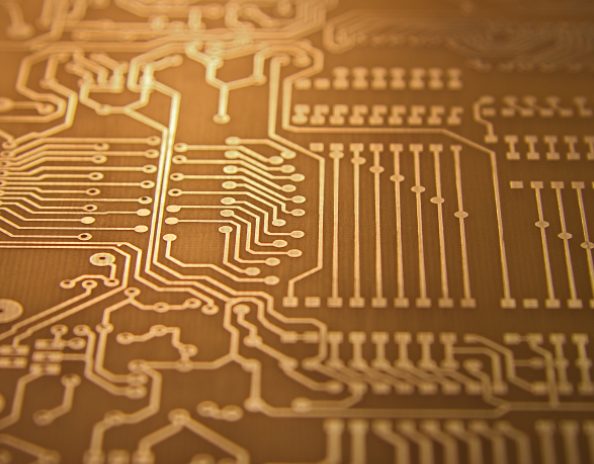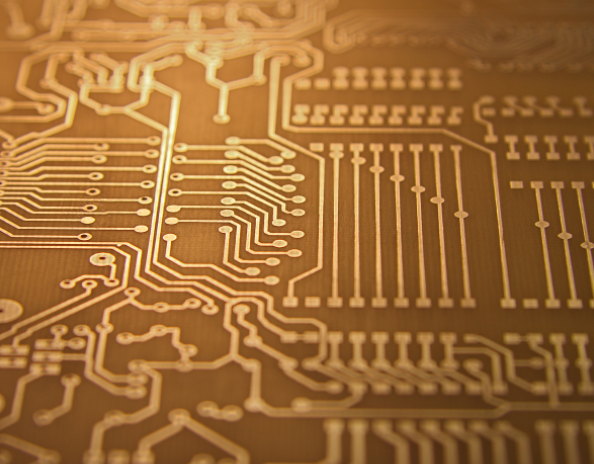
Do you know how to design PCB anti-static ESD
In the design of PCB board, the anti-static design of PCB can be realized through layering, correct layout and installation In the design process, most design modifications can be limited to adding or reducing components through prediction It can prevent electrostatic discharge Here are some common precautions
Try to use multi-layer PCBs Compared with double-sided PCB, ground plane and power plane, as well as closely arranged signal line ground spacing can reduce common mode impedance and inductive coupling, making it 1/double-sided PCB 10 to 1/100. Try to keep each signal layer close to the power layer or ground plane As there are components, short connecting lines, and many fillers on the top and bottom surfaces of high-density PCB, you can consider using inner layer lines
How to design PCB anti-static ESD
For double-sided PCB, tightly interwoven power supply and grounding grid shall be used. The power cord shall be close to the ground wire and connected as much as possible between the vertical line and the horizontal line or the filled area. The grid size on one side is less than or equal to 60mm. If possible, the grid size should be less than 13mm. Ensure that each circuit is as compact as possible.
Below the connector that leads to the outside of the chassis (which is easily hit by ESD) on all PCB layers, place a wide chassis floor or polygon to fill the floor, and connect them with vias at a distance of about 13mm
Place the mounting hole on the edge of the card, and connect the top and bottom pads without solder blocking around the mounting hole to the main housing for grounding.
During PCB assembly, do not use any solder on the top or bottom pad Use screws with included washers to achieve close contact between PCB and metal main housing/brackets on the mask layer or ground plane
The same "isolation zone" shall be set between chassis grounding and each layer of circuit grounding; If possible, keep the separation distance 0.64mm. At the top layer and bottom layer of the card near the mounting hole, the conductor is connected to the main housing grounding and circuit grounding with 1.27mm wide conductor every 100mm along the main housing grounding. Place pads or mounting holes for installation between chassis grounding and circuit grounding near these connection points. These ground connections can be cut off with a blade to keep the circuit open, or bridged with a magnetic bead/high-frequency capacitor.
If the circuit board will not be placed in the metal main housing or mask equipment, the top and bottom main housing ground wires of the circuit board should not be coated with solder resist, so that they can be used as the discharge electrode of ESD arc.
Set ring grounding around the circuit as follows:
(1) In addition to the edge connector and the chassis grounding, place a circular grounding path around the entire perimeter.
(2) Ensure that the width of the ring ground of all layers is greater than 2.5mm.
Circuit board

(3) Ring grounding shall be connected with through hole every 13mm.
(4) Connect the ring ground to the common ground of the multilayer circuit.
(5) For double-sided boards installed in metal enclosures or shielding devices, the ring ground should be connected to the common ground of the circuit. For unshielded double-sided circuits, the ring ground should be connected to the main housing ground. Solder resistance should not be used for ring grounding, so that the ring grounding can be used as an electrostatic discharge rod. Place at least one at a certain position on the 0.5mm wide gap of the annular ground (all layers), so as to avoid forming a large loop. The distance between signal wire and ring grounding shall not be less than 0.5mm. In areas that may be directly affected by electrostatic discharge, grounding wires must be laid near each signal line.
(7) Normally, a series resistor and a magnetic bead are placed at the receiving end. For cable drivers that are vulnerable to electrostatic discharge, you can also consider placing a series resistor or magnetic bead on the driver end.
(8) The transient protector is usually placed at the receiving end. Use short and thick wires (the length is less than 5 times the width, preferably less than 3 times the width) to connect to the main housing for grounding. The signal line and ground wire of the connector shall be directly connected to the transient protector, and then connected to other parts of the circuit.
Place the filter capacitor at the connector or within 25 mm of the receiving circuit.
(1) Use short and thick wires to connect to the main housing ground or the receiving circuit ground (the length is less than 5 times the width, preferably less than 3 times the width).
(2) The signal line and ground wire are first connected to the capacitor, and then to the receiving circuit.
(3) Make sure the signal line is as short as possible.
(4) When the length of the signal line is greater than 300mm, the ground wire must be laid in parallel.
(5) Ensure that the loop area between the signal line and the corresponding loop is as small as possible. For long signal lines, the positions of signal lines and ground wires must be switched every few centimeters to reduce the loop area.
(6) Drive signals enter multiple receiving circuits from the network center. Ensure that the loop area between the power supply and the grounding is as small as possible, and place a high-frequency capacitor near each power pin of the integrated circuit chip.
(7) Place a high-frequency bypass capacitor within 80mm of each connector. Where possible, fill unused areas with land and place all layers of filled land 60mm apart. Ensure that any large ground filling area (about 25 mm × 6mm).
(8) When the length of the opening on the power supply or ground plane exceeds 8mm, use a narrow wire to connect both sides of the opening. The reset line, interrupt signal line or edge trigger signal line cannot be arranged near the edge of PCB.
Connect the mounting hole to the circuit common ground or isolate it.







